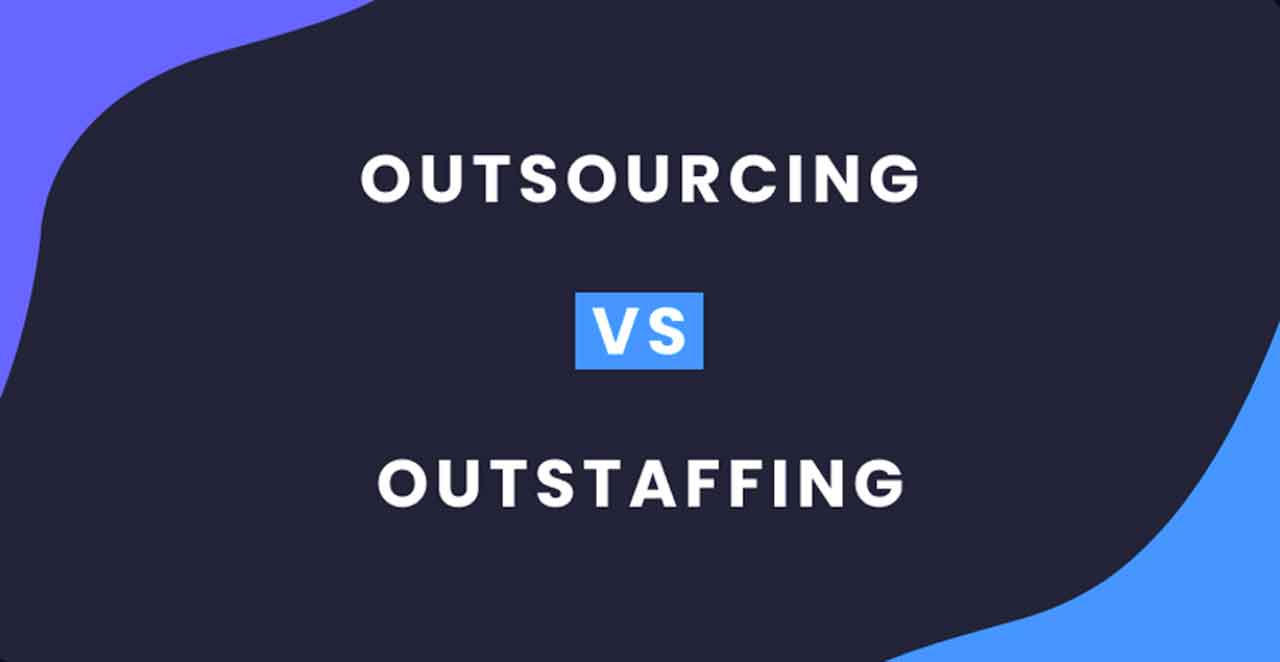Businesses frequently struggle to locate the proper people to fill their IT demands in the quickly developing world of technology. This is where the flexible and effective option of IT outstaff procedure, which has grown in popularity recently, comes into play. We will explore the features, benefits, best practices, workflow, estimated cost of outstaffing services, potential drawbacks, and crucial advice for hiring IT outstaffing personnel in this post as we go deep into the topic of IT outsourcing.
Understanding IT Outstaffing
IT outstaffing is fundamentally the purposeful employment of devoted individuals or teams to work remotely on particular projects for a set amount of time. These experts become an extension of the client’s own team and focus only on the given project while under the client’s management.
Features of the IT Outstaffing Model
– Tailored Talent Acquisition: By hand-selecting people with the appropriate skill set and competence, organizations can ensure a perfect match for their project requirements.
– Seamless Integration: Professionals hired from outside the client’s team integrate into it without any difficulty, adhering to its procedures, culture, and channels for communication.
– Scalability: This approach includes scalability, which enables organizations to change the team size in accordance with project demands, whether they need to scale up during busy times or down during slower ones.
– Cost-effectiveness: By removing the requirement for full-time employment or long-term contracts, outstaffing lowers the overhead expenses of hiring, onboarding, training, and benefits.
Outstaffing vs. Outsourcing

Outsourcing and outstaffing both require employing external workers, but their methods and goals vary:
– Outstaffing: In this approach, experts join the client’s team as essential members and focus solely on the given project while being managed by the client. The management and execution of the project remain entirely in the client’s hands.
– Outsourcing: Outsourcing is giving control of a project or a specific set of activities to an outside team or organization. The project is managed by the outsourcing provider, with little to no customer engagement in day-to-day activities.
Advantages of IT Outstaffing
– Access to Top Talent: By outsourcing their IT needs, companies may access a huge global talent pool, allowing them to acquire specific skills and knowledge that might not be accessible locally.
– Cost savings: Companies may drastically lower their operational costs by eliminating the expenditures related to in-house hiring and keeping full-time personnel.
– Flexibility and Scalability: This approach enables companies to quickly scale their team up or down in accordance with project needs, ensuring efficient resource allocation and minimal costs.
– Increased Focus: Businesses may free up the time and expertise of their core team to focus on strategic projects and core company operations by assigning project-related work to needed specialists.
Best Practices of Successful IT Outstaffing
– Clearly Define Project Requirements: Before beginning the outstaff process, it is crucial to have a comprehensive grasp of the project requirements, including the needed abilities, experience level, and project duration.
– Have Strong Communication Channels: For smooth cooperation and project success, it is essential to have strong communication channels between the internal team and the outside contractors.
– Establish Realistic Expectations: In order to achieve alignment between the customer and the understaffed team, it is essential to establish realistic expectations regarding project milestones, deliverables, and timetables.
– Promote a Positive Team Culture: Successful outstaffing engagements depend on cultivating a positive team culture that emphasizes cooperation, knowledge sharing, and mutual respect.
Workflow and Approximate Cost: Unveiling the Inner Workings
The workflow for outsourcing IT workers adheres to a clearly established procedure that guarantees seamless communication between the customer and the outsourced specialists. For these engagements to be managed properly, it’s important to comprehend this procedure. Additionally, knowing the general cost of IT outstaffing helps organizations use their resources effectively and make educated decisions. Let’s examine the workflow and financial elements of IT outsourcing in more detail.
Workflow of IT Outstaffing
- Project Scoping and Defining Requirements:
Clearly establishing the requirements and defining the scope of the project are the initial steps in the procedure. In order to determine the precise knowledge, degree of experience, and competence required from the outstaffed specialists, the client consults extensively with the project stakeholders. This stage guarantees agreement with the project objectives and lays the groundwork for effective applicant selection.
- Candidate Screening and Selection:
The following step, which focuses on applicant screening and selection, occurs after the project requirements have been established. Outstaff companies use their broad networks and industry knowledge to find qualified applicants with the required skill set. In order to find the specialists who are the best fits, the customer and the supplier work together to evaluate resumes, conduct interviews, and gauge technical competency.
- Onboarding and Integration into the Team:
The chosen specialists go through an onboarding step after the selection process to become familiar with the client’s team, procedures, and project-specific needs. This entails setting up access to required tools and systems, offering training or orientation sessions, and conveying the project’s goals and deliverables to the experts who are short-staffed. The integration procedure guarantees a seamless changeover and promotes a sense of community among the client’s team members.
- Project Execution and Monitoring:
The outstaffed professionals take an active part in project execution when the onboarding procedure is over. They cooperate with the internal team, offer their knowledge, and endeavor to meet the project’s objectives. In order to ensure efficient collaboration, offer updates, handle any problems, and maintain transparency throughout the project lifespan, regular communication channels are developed. The customer retains complete control over project management, and the specialists hired on a temporary basis follow the client’s instructions.
- Regular Communication and Progress Updates:
The foundation of a successful outstaffing engagement is effective communication. The internal team and the outside specialists are in continual touch thanks to regular communication channels including video conferencing, chat platforms, and project management systems. To keep everyone informed and to enable fast response to any new problems, progress updates, milestone successes, and possible bottlenecks are conveyed.
Approximate Costs
The cost of outsourcing IT personnel varies based on a number of variables. These elements consist of:
– Location of the Outstaffed Team: Depending on where the professionals are located, different costs may apply. The cost structures of various areas vary, with some places having lower costs than others.
– Experience Level, Skill Set, and Expertise: The cost is also influenced by the experience level, skill set, and expertise of the outstaffed specialists. Higher charges may be demanded for highly specialized knowledge and abilities.
– Project Complexity: The cost may be impacted by the project’s complexity and the needed level of technical expertise. Projects requiring complex specifications or cutting-edge technology could have higher rates.
– Engagement Length: Another factor affecting total cost is the length of the outstaffing engagement. In comparison to shorter initiatives, longer-term agreements could provide more attractive prices.
To get a thorough cost breakdown customized to their unique project requirements, firms must work together with their selected outstaffing supplier. Making judgments based on clear awareness of the financial repercussions is made possible by doing this.
Potential Complications in IT Outstaffing
Although there are many advantages to outsourcing IT, it’s crucial to be aware of any potential problems that can occur:
– Cultural Divergences: To maintain good communication and collaboration while working with professionals from various backgrounds and cultures, more effort may be needed.
– Time Zone Differences: Working with understaffed teams in various time zones can occasionally make it difficult to plan meetings, handle problems quickly, and maintain real-time communication.
– Concerns about data security: To protect sensitive data and intellectual property, sharing sensitive project information with experts who are short-staffed needs strong security measures.
Tips for Hiring IT Outstaffing Resources
– Explicitly Define Project Goals: To guarantee a targeted search for acceptable outstaffing workers, start by explicitly describing your project goals and expectations.
– Completely Assess competence: To make sure the applicants’ knowledge, abilities, and relevant work history are in line with the demands of your project, do a thorough assessment of each candidate’s competence.
– Create Reliable Communication Channels and Tools: Use them to promote smooth communication and cooperation between the internal team and the outside contractors.
– Grow a Powerful Partnership: Establish mutual trust, have frequent feedback meetings, and acknowledge the work of the professionals who are understaffed to strengthen your collaboration.
Conclusion
IT outstaffing provides a flexible answer for companies looking for specialized personnel while keeping control of their projects. Outstaffing has been a popular option for many firms because of its specialized talent acquisition, scalability, cost effectiveness, and flexibility. Businesses may fully utilize this process by adhering to best practices, comprehending the workflow, being aware of potential issues, and implementing effective recruiting tactics. This will guarantee excellent project outcomes and ongoing progress in the dynamic field of technology.







